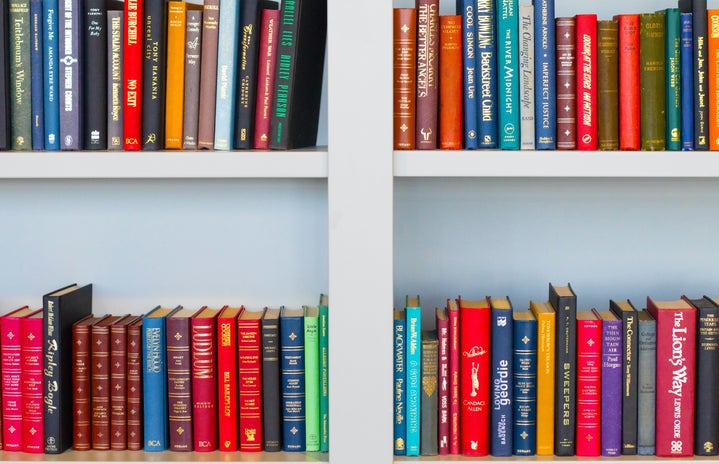Welcome back to my Author Spotlight series! With spring underway, many new books are being published, so get ready for more interviews and book recommendations! As an advocate for bilingualism and everything this book stands for, I am extremely happy to reveal my interview with graphic novelist Christine Suggs on their debut YA novel “¡AY, MIJA!”
Christine Suggs is an illustrator, designer and comic artist. Their work explores the intersection of their identities, namely being a queer, fat, Latinx feminist. Suggs is no stranger to addressing difficult issues of body positivity, cultural norms and gender – they’re a regular contributor for The Lily by “The Washington Post,” where she writes about cultural identity, body positivity, queerness and intergenerational differences in immigrant families with care and relatability. They’re also into Pokémon and cats. They’re currently living in Dallas, TX with their super rad husband and insanely adorable pets.
Featuring a non-binary and bilingual protagonist, “¡AY, MIJA!” adds a diverse and personal story to the genre. Sixteen-year-old Christine takes their first solo trip to Mexico to spend a few weeks with their grandparents and tía. At first, Christine struggles to connect with her family due to a language barrier. Seeing the places their mom grew up—the school she went to, the café where she had her first date with their father—Christine becomes more and more aware of the generational differences in their family.
Soon Christine settles into life in Mexico: eating pan dulce, drawing what they see, and growing more comfortable with Spanish. But when Mom joins their trip, Christine’s two worlds collide. They feel homesick for Texas and struggle against traditions. Eventually, through exploring the impacts of colonialism in both Mexico and themselves, they find their place in their family and begin to feel comfortable with their mixed identity.
What made you decide to write this as a graphic novel? How does telling your story through this medium help you convey what you want to say to your audience?
Several years ago, I started posting autobiographical comics on my Instagram. Most of them were to try to share silly stories about my then-boyfriend-now-husband about our lives together. Eventually, I started receiving more and more responses, especially as I worked through more challenging topics like weight and mental health. Comics became the way I processed my feelings.
A lot has been written lately about comics being a medium rather than a genre and that it’s not taken seriously enough in the literary world. I completely agree. But I do concede that my style is quite “cute” and thus makes it more approachable, especially when I’m handling tough topics. To me, that’s a strength. With autobiographical comics, you’re literally inviting the reader to see the world how you do. I think it’s a powerful medium for conveying emotions that you just can’t capture any other way.
Cats are something found within your novel and personal life. If you had to choose a cat breed for the teenage version of yourself and one for the version you are today, what would it be and why? Any fun names you’d give them?
I love this question! Okay, younger Christine would be a skittish black cat who runs away at the slightest movement but desperately wants to be pet. They’d be named something very over the top and emo like Nyx or something. Like a lot of queer kids, I was very into Greek mythology.
Current day Christine is a fat orange tabby (yes, orange tabbies are usually boys, but hello, gender!) They meow way too loudly and know exactly what they want and that is CUDDLES. Taking inspiration from the musical “Cats,” I’d go with a fanciful name like Glamorama.
You cover a lot of common insecurities such as after college plans, body images, etc. Were there any that you want to expand upon maybe someday in the future?
Absolutely! I’m already working on my second book with Little, Brown Ink. This one, while still based on a memorable summer I had, is lightly fictionalized, allowing me to explore what it’s like to write a fat nonbinary character in the present day. The main character is a high school kid who goes to this amazing art camp at a fancy art school. It’s about finding your community, the joy of fitting in for the first time in your life, a dash of queer romance and the real and frustrating financial barriers when it comes to college education in this country.
Your biography says that you are an “avid Dungeons & Dragons player.” What classes would your characters be and why?
Teen Christine: Sorcerer elf with a hermit background. I surrounded myself with a lot of books, false superiority, and sarcasm in those days. A haughty (and hot) elf is something I’d be totally into. Tragic backstory? You bet.
Present day Christine is a bard, and my friends all know it, as I drag them to karaoke once a year, complete with glitter makeup and rainbow outfits. I’d probably be a dwarf (that was my first character and I love a hairy tough guy!) with some sort of fancy boy background – I do love a nice wine.
When researching for the novel, what was something you learned that gets hardly told in the US about Mexicans?
Something I wish I’d been able to touch upon more in this book was the history of colorism and anti-indigenous sentiments in Mexico. I was taught simply that our ancestors were a mix of Aztec and Spanish. Now we know that the term “Aztec” contains many different ethnic groups. Many families tried to distance themselves from their indigenous backgrounds for fear of being called “Indio” or “pueblo”, basically a pejorative term for someone who is dark or from the countryside. I think a lot about how much of our history was lost to time and racist beauty standards that forced people to obscure their pasts.
–
Thanks so much Christine for answering my questions! Even though I’ve never been to Mexico, I really connected with your graphic novel and your experience reminded me of the country where my father was born. I can’t wait to see what your next novel entails!
I’d also like to thank Cheryl Lew of the Hachette Book Group who extended this opportunity to me and gave me a DRC of Christine’s work. I’m very excited to continue to work with you as I continue to grow my Author Spotlight series, showcasing every author’s work especially those like Christine’s whose novel addresses difficult issues in a normalized positive way.


